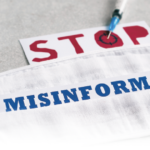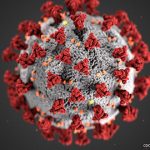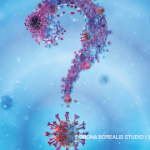 ACR CONVERGENCE 2020—Three representatives of the U.S. Food & Drug Administration (FDA) Division of Rheumatology and Transplant Medicine updated rheumatologists at an ACR Convergence session on new drug indications, safety precautions and label changes, and an emergency program to rapidly evaluate existing immunomodulating therapies for use in COVID-19 patients.
ACR CONVERGENCE 2020—Three representatives of the U.S. Food & Drug Administration (FDA) Division of Rheumatology and Transplant Medicine updated rheumatologists at an ACR Convergence session on new drug indications, safety precautions and label changes, and an emergency program to rapidly evaluate existing immunomodulating therapies for use in COVID-19 patients.
New Indications
In the past year, the FDA approved several new indications for drugs to treat rheumatic diseases, including pediatric conditions. Intravenous (IV) golimumab was approved for polyarticular juvenile idiopathic arthritis (pJIA) and expanded for use in juvenile psoriatic arthritis patients as young as 2 years of age, based on the not-yet-published results of a phase 3 trial of 127 pJIA patients ages 2–17.1
Pharmacokinetic exposure of IV golimumab in children was matched with efficacy data from other well-controlled studies of the drug in adults with similar diseases, said Raj Nair, MD, acting team leader and medical officer of the FDA’s Division of Rheumatology and Transplant Medicine.
“This approach was supported by the cumulative experience with drug development in the pediatric arthritis space over the last couple of decades and the improved understanding of the disease similarities between adult and pediatric patients,” said Dr. Nair. The dosing regimen for golimumab in pediatric patients is 80 mg/m2 infusion over 30 minutes at weeks 0 and 4, then every eight weeks.
Tofacitinib, an oral Janus kinase inhibitor, was approved for pJIA at 5 mg or weight-based equivalent dose twice daily, with dose adjustment for patients with severe renal or moderate hepatic impairment. The approval was based on not-yet-published results of a 44-week, phase 3 clinical trial of 225 patients 2–17 years old, with an 18-week, open-label, lead-in phase followed by a 26-week double-blind, randomized withdrawal phase where patients took either tofacitinib or placebo.2
The trial met its primary endpoint: At week 44, 55% of patients in the placebo group flared, compared with 31% of patients who continued treatment.
The FDA determined that a post-marketing study is required to assess risk of malignancies, serious and opportunistic infections, thrombosis, and effects on patients’ growth, Dr. Nair said.
Other notable new indications and approvals in the past year included:
- Canakinumab, an interleukin-1 (IL-1) beta inhibitor, was approved to treat adult-onset Still’s disease based on pharmacokinetic exposure and extrapolation of established efficacy of the drug in systemic JIA.3 Dosing is 4 mg/kg subcutaneous injections (300 mg maximum) for patients weighing 7.5 kg or more every four weeks.
- Secukinumab, an IL-17 inhibitor, was newly approved for non-radiographic axial spondyloarthritis (nr-AxSpA) based on results of a 52-week, phase 3 trial of 555 patients.4 In the trial, a significantly higher percentage of patients in the treatment arm achieved ASAS40 compared to those on placebo. The approved regimen is 150 mg subcutaneous injections taken every four weeks with or without a loading dose. The FDA also approved a new, 300 mg dosing regimen of secukinumab as an option for patients with continued, active ankylosing spondylitis (AS) in addition to the previously approved 150 mg dose. This was based on results of a phase 3 trial of 226 AS patients who were randomized to receive 10 mg/kg IV secukinumab at weeks 0, 2 and 4, followed by either 150 or 300 mg of secukinumab or placebo every four weeks.5 More patients in the 300 mg arm improved, compared with those who took 150 mg, with similar safety profiles at both doses.
- Ixekizumab, another IL-17 inhibitor, was also approved for treatment of nr-AxSpA. The dosing regimen is 80 mg by subcutaneous injection every four weeks. The approval was based on the results of a 52-week, phase 3 randomized, placebo-controlled trial.6 More patients in the treatment group achieved ASAS40 than patients who took the placebo.
- Nintedanib, a tyrosine kinase inhibitor, was approved to treat chronic fibrosing interstitial lung diseases with a progressive phenotype. The approved dose is 150 mg by mouth every 12 hours. Approval was based on the results of a randomized, double-blind, placebo-controlled, parallel group trial of 663 patients.7 Participants who took nintedanib had less change from baseline in their forced vital capacity over 52 weeks compared to those on placebo. “Nintedanib had previously been approved for slowing the rate of decline in pulmonary function for patients with systemic sclerosis-associated lung disease, but this approval includes other rheumatic diseases, including lupus, RA and sarcoidosis,” said Dr. Nair.
- Belimumab, a B-lymphocyte stimulator inhibitor, no longer has on its label precautionary language for use in Black patients with systemic lupus erythematosus (SLE). The update was based on the results of a randomized, double-blind, placebo-controlled trial of 496 Black adults with active, autoantibody-positive SLE that measured safety.8 Patients were randomized to take either a monthly 10 mg/kg IV dose or placebo. Belimumab was found to be efficacious and no new safety signals were identified.
- New biosimilars approved include adalimumab-afzb and adalimumab-fkjp, both biosimilar to adalimumab, and infliximab-axxq, biosimilar to infliximab. New indications for RA, granulomatosis with polyangiitis and microscopic polyangiitis were added for rituximab-abbs, biosimilar to rituximab.
- New generics: The FDA approved 375 mg/20 mg and 500mg/20 mg delayed-release tablets of naproxen and esomeprazole magnesium for relief of arthritis symptoms and reduced risk of naproxen-associated gastric ulcers, and 5 and 10 mg capsules of meloxicam to manage osteoarthritis pain.9
Safety Updates & Label Changes
The FDA issued several important new safety precautions and label changes in the past year that are of interest to rheumatologists, said Amit Golding, MD, PhD, medical officer in the FDA’s Division of Rheumatology and Transplant Medicine. In April, reports of serious cardiac arrythmias in patients taking either hydroxychloroquine or chloroquine for COVID-19 led the FDA to investigate. Based on collected case reports, the FDA found that 84% of these cardiac events occurred with concomitant use of other drugs that could prolong QT intervals, such as azithromycin, and concluded that these combinations could increase arrythmia risks in COVID-19 patients.



